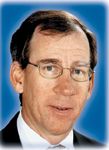Article
How docs think; how it affects diagnoses
Physicians often fall short in patient interactions: asking questions, listening carefully, or observing. Often, this can affect their ability to solve clinical puzzles.

Key Points

For this article, we had the pleasure of interviewing Jerome Groopman, MD, a Harvard Medical School professor, cancer specialist, and author of How Doctors Think, which recently spent time on The New York Times best-seller list. In the book, Dr. Groopman explains that physicians often fall short in patient interactions: asking questions, listening carefully, or observing. Ultimately, this can affect their ability to solve clinical puzzles.
His research indicates that doctors are accurate in their diagnoses most of the time, but conservatively, about 15% of all patients are misdiagnosed. Some experts think the number is as high as 20% to 25% and, in half of those cases, the result is serious injury or even death.

The way physicians think has changed over the last 25 years, according to Dr. Groopman. We have become doers ,rather than thinkers. Today's physicians are faced with a reduction in reimbursement and rising overhead costs, which has led to an erosion of our incomes. As a result, physicians are pressured to see more patients and spend less time on each patient visit. Physicians are now compelled to think more quickly, often relying on their first impression and failing to more thoroughly delve into a patient's history. Dr. Groopman is not surprised that we may make more errors that result in more litigation and, consequently, higher malpractice premiums.
He points out that physicians have become more reliant on technology to guide our therapeutic decisions. Although we are gaining more confidence in imaging technology to assist in the diagnosis and treatment of urologic diseases, the error rate can be very high. Dr. Groopman cites data from a Duke University study reporting an imaging error rate of 25%.
An example of the double-edged sword of technology is the electronic medical record. An EMR has distinct benefits in providing quick access to patients' medical records and in significantly reducing the risk of losing data with a good backup system in place.
EMRs are also very efficient for billing purposes and enhancing reimbursement. The same templates that are used to increase levels of E&M coding also present the seductive aspect of checking off the boxes in a template-driven system, reducing the use of cognitive skills. Dr. Groopman has noticed that some residents will even copy and paste a history taken by other physicians into the EMR. He believes that this is a recipe for errors caused by omitting something that is important. Using templates can move you away from active listening and from asking open-ended questions such as "How do you feel?" or "What's bothering you?"

















